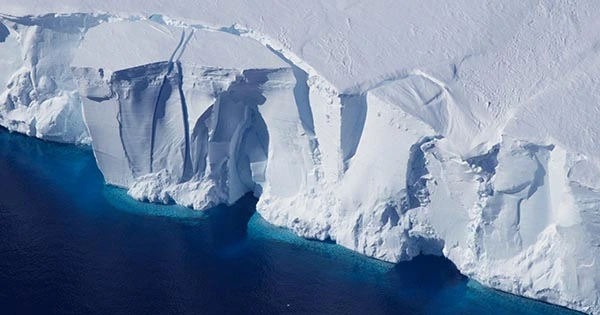The fact that many of the effects of climate change are delayed and will continue to occur long after people have ceased fiddling with the planet’s thermostat is one of its most frightening features. The amount of ice Greenland will lose due to the warming that has already occurred is an important measure, and new research claims to address this issue for that particular measure. Estimates of the already locked-in implications are typically fairly imprecise.
Even if global warming halted at its current rate, a team led by Professor Jason Box predicted that 110 trillion tonnes of Greenland’s ice would still melt and flow into the ocean. Simply put, the summers have gotten too warm for a lot of the ice on the edge of the large island, and not enough fresh snow is falling to make up for what is being lost.
Even if emissions from fossil fuels and other sources of greenhouse gas caused by humans were to end tomorrow, this would still be the case. The actual melting will be significantly higher because that won’t happen. “It is a ferociously conservative absolute minimum. Realistically, this number will more than double in the next century “In a statement, Box from the National Geological Survey of Denmark and Greenland stated.
The ability to imagine 110 trillion tonnes of anything is rare in human brains. Because of this, the study’s authors say that there is enough frozen water to raise the seas’ level by 27.4 cm, or almost a foot. When you consider that all of this is happening on only one island, it might not seem all that terrible. While the East Antarctic ice sheet is seven times larger than its West Antarctic counterpart and almost as big as Greenland’s, there is hope that it will be more stable than the other two.
“In the foreseeable future, in which global warming only continues, the Greenland Ice Sheet’s contribution to sea level rise will only keep growing. The committed mass loss from the Greenland Ice Sheet more than doubles to 78 cm when we use the severe melt year 2012 as a model for an average constant climate later this century, Box continued.
In addition to the rise brought on by the thermal expansion of the water already present in the ocean, several mountain ranges are also losing snow at the same time. All of this indicates that numerous low-lying places, including perhaps entire cities, are already doomed.
However, a lot more land would mainly withstand rises of a meter or two, not the much bigger threat posed by unchecked emissions.
Although there is always some uncertainty in long-term forecasts, the authors note that their work has substantially smaller error margins than earlier approaches. Instead of relying on climate models, they are establishing the gains and losses that make up the ice budget for each of Greenland’s regions annually for the past 20 years using measurements from satellites and teams on the ground.
The group determined the line at the maximum height where melting would take place if the system were in balance. 3.3 percent of Greenland’s entire snowpack is located in the region above this where melting is taking place. Unless the weather suddenly changes, all of this will be lost. The southwest is the main portion of the susceptible zone.
Box is quite sure about the smallest amount of ice that can melt, but he admits that the approach utilized doesn’t help determine how long the melting will take. “Our observations show that the majority of the committed sea level rise will occur this century,” he adds despite this.
Box has become somewhat famous for his succinct summary of the effects of melting seafloor methane. Among scientists over the past ten years, he also has the most citations.
















